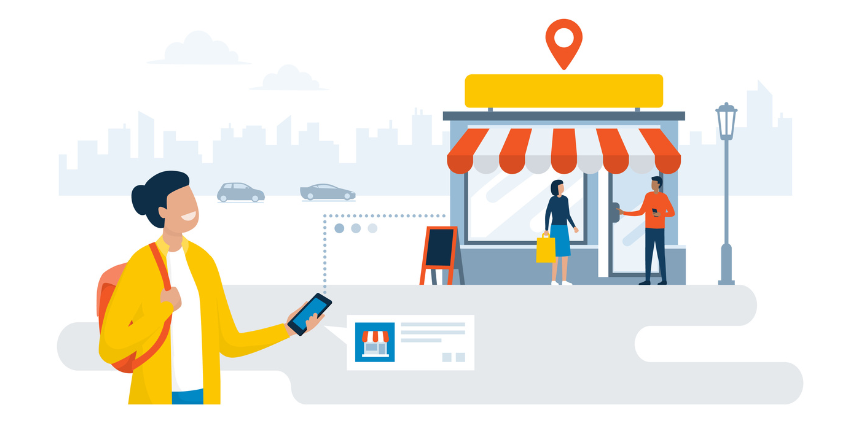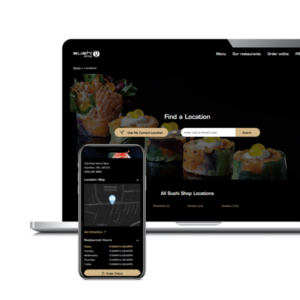
Our in-house Dev Studio covers every critical discipline, giving DAC the knowledge and skill to repeatedly deliver data-informed.

In today’s digital age, personalization and ease of access are key to standing out in a competitive marketplace. One essential tool that can make a big difference is the humble store locator, which not only helps customers find physical stores quickly and efficiently but also offer a number of benefits that can significantly boost sales.
In this post, we will explore the importance of store locators and how DAC’s expert teams coordinate to ensure the ongoing success of this tool.
A store locator, in its most basic form, is an online tool that allows users to find the location of physical stores closest to their current location or a specific address. These locators typically include detailed information about each store, such as opening hours, available services, contact information, and customer reviews.
But how, exactly, does a simple store locator make such a difference for your business? In our extensive experience, we’ve found that there are three main advantages to unlock.
One of the biggest benefits of store locators is a potentially significant improvement in the user experience. By providing a quick and easy way to find the nearest stores, customers can save time, move to the next stage in their purchase decisions, and start planning their visits. This can ultimately translate into greater customer satisfaction, which in turn can increase loyalty and repeat purchases.
A well-designed, user-friendly store locator can increase conversion rates by facilitating each customer’s search and decision process. Users who can quickly find a store and obtain relevant information are more likely to make a purchase. But that’s not all: by integrating features such as local promotions and real-time product availability, additional sales can be generated.
Store locators also play a crucial role in local SEO. Each location page can be optimized with local keywords, addresses, and other relevant information that helps your business locations appear more prominently in local search results. This not only increases your online visibility but also generates more traffic to your physical stores.

To get the most out of a store locator, it is crucial that it is implemented is effectively. That’s why our teams work collaboratively and synergistically to design and execute innovative digital solutions—including store locators—that meet the specific needs of our clients. Each department brings its own unique experience and expertise, ensuring optimal outcomes for all our store locator builds.
The creative team is responsible for the design and user experience of the store locator. This includes creating an intuitive and attractive interface that makes search and navigation easy for users. The creative team also works on integrating visual elements such as interactive maps, icons, and other graphics that enhance the look, feel, and functionality of the store locator.
The SEO team ensures that each location page is optimized for search engines. This includes local keyword research, on-page content optimization, URL structures, and the inclusion of structured data to improve visibility in local search results. Good local SEO can attract more potential customers to physical stores, increasing sales opportunities.
Subscribe to our monthly newsletter.
The analytics team plays a crucial role in monitoring and analyzing store locator performance. Using tools such as Google Analytics, data scientists can track key metrics such as the number of users using the store locator, the most searched locations, average time on page, and conversion rates. This data is essential to identify areas for improvement and continually optimize the tool to maximize its effectiveness.
The development team is responsible for the technical implementation of the store locator. This includes integration with mapping systems, backend configuration to manage locations, and implementation of advanced features such as proximity search and real-time product availability. All these features come together in a well-developed store locator that is fast, stable, and effortlessly easy to use.
The QA team ensures that the store locator works correctly on all browsers and devices. They perform extensive testing to identify and fix bugs, ensuring a smooth user experience. In addition, the QA team verifies that all integrations, such as map APIs and product databases, run smoothly.
In short, a store locator can be so much more than a handy tool on a website; it can be an essential strategic element for any business with a physical presence. By enhancing the customer experience, increasing in-store traffic, generating valuable data, and optimizing local SEO, store locators offer a significant return on investment—and in a world where competition is fierce and the customer experience is crucial, implementing a high-quality store locator on your website can be the difference between losing a potential customer and gaining a loyal one.
If your business does not already have this tool—or your store locator hasn’t been refreshed and optimized for several years—now is the time to act. Make the appropriate investment in a store locator and you’ll more than likely see a noticeable improvement in customer satisfaction and overall business performance.
At DAC, we help our clients maximize their digital potential, and we are here to offer you the best solutions tailored to your specific needs—from simple store locators to the most complex digital deployments. Want to know more? Let’s talk.
Our in-house Dev Studio covers every critical discipline, giving DAC the knowledge and skill to repeatedly deliver data-informed.
Our in-house Dev Studio covers every critical discipline, giving DAC the knowledge and skill to repeatedly deliver data-informed.
Our in-house Dev Studio covers every critical discipline, giving DAC the knowledge and skill to repeatedly deliver data-informed.
Subscribe to our monthly newsletter.